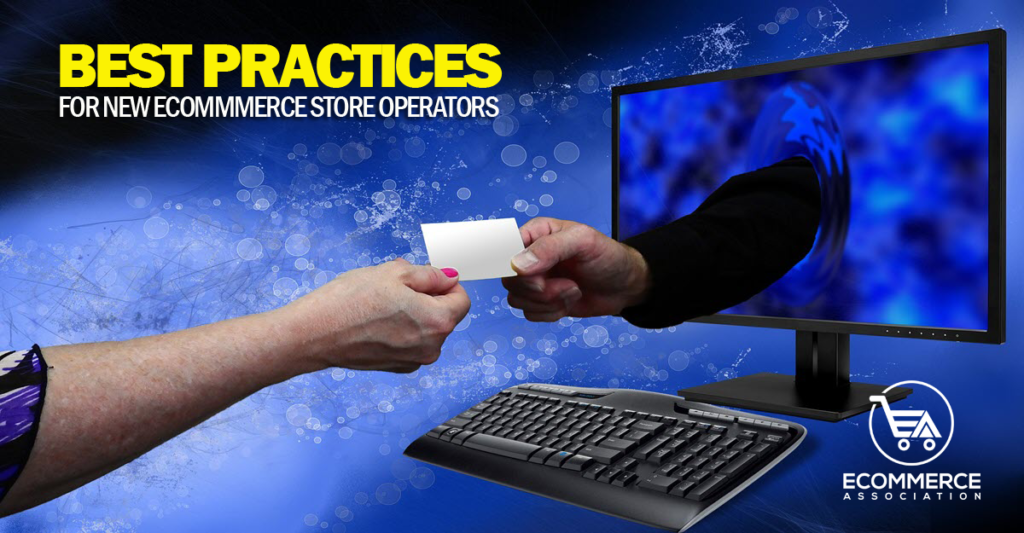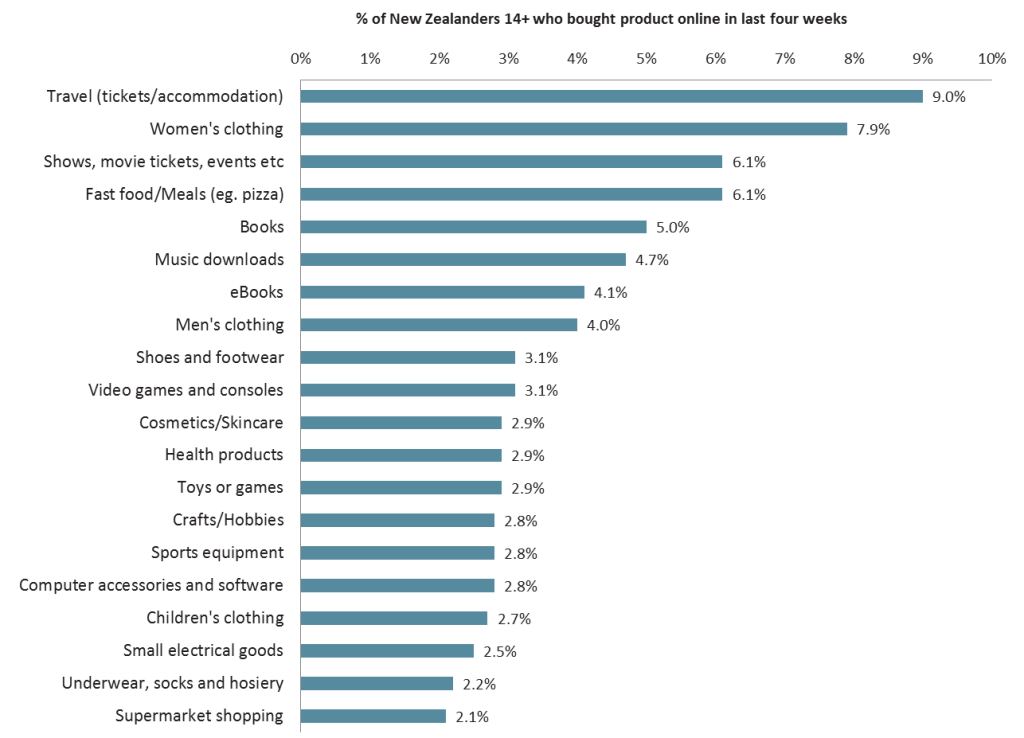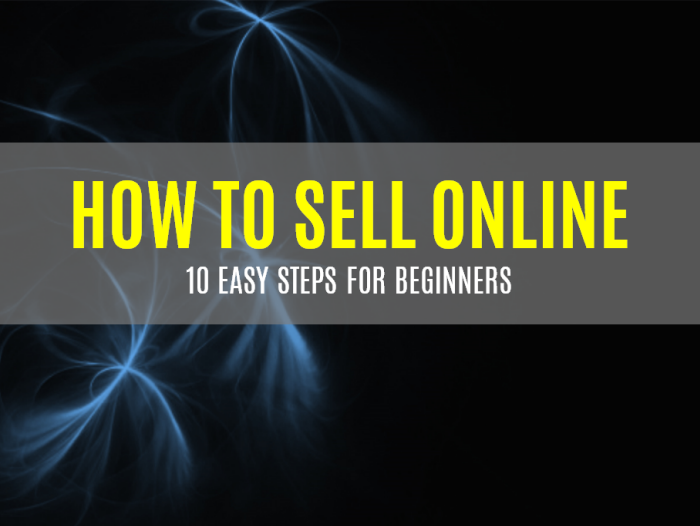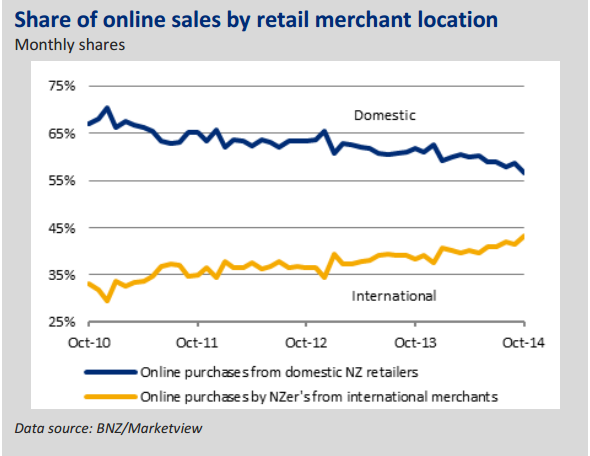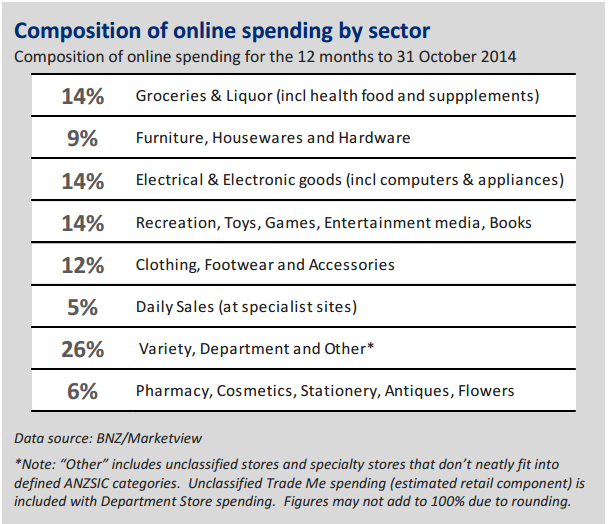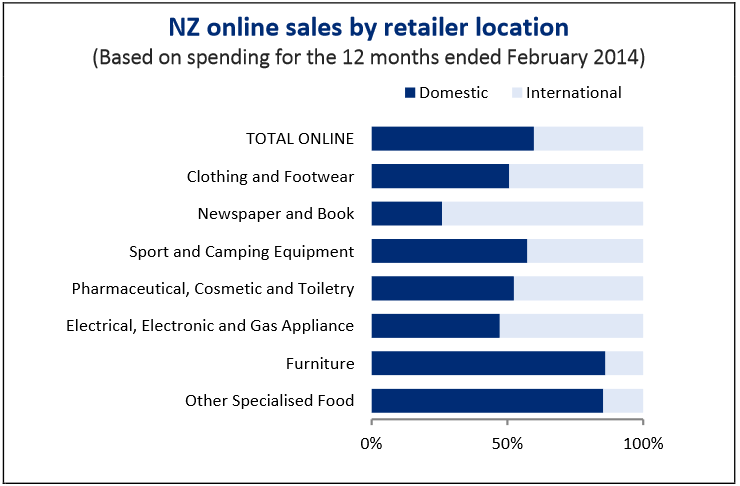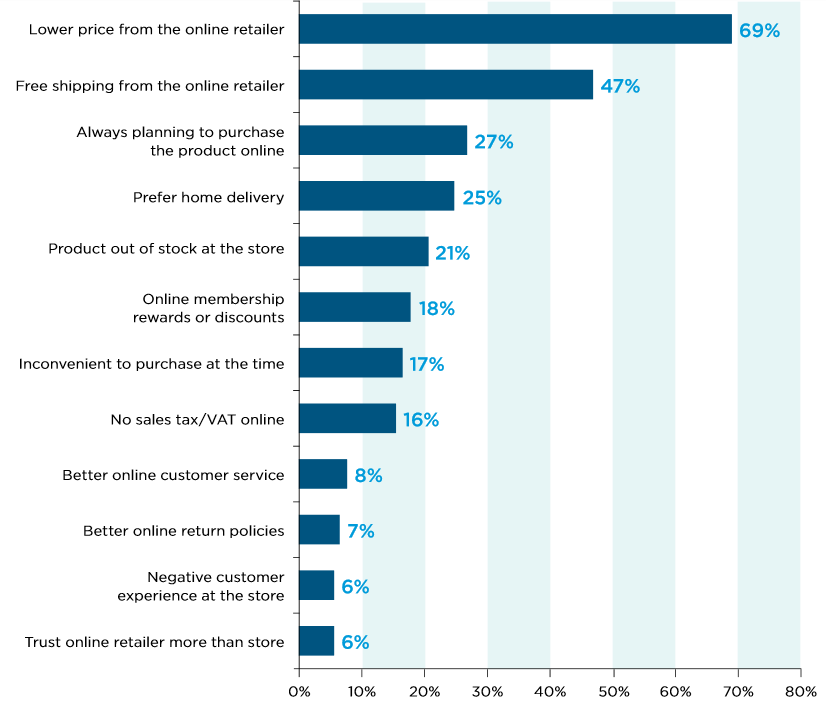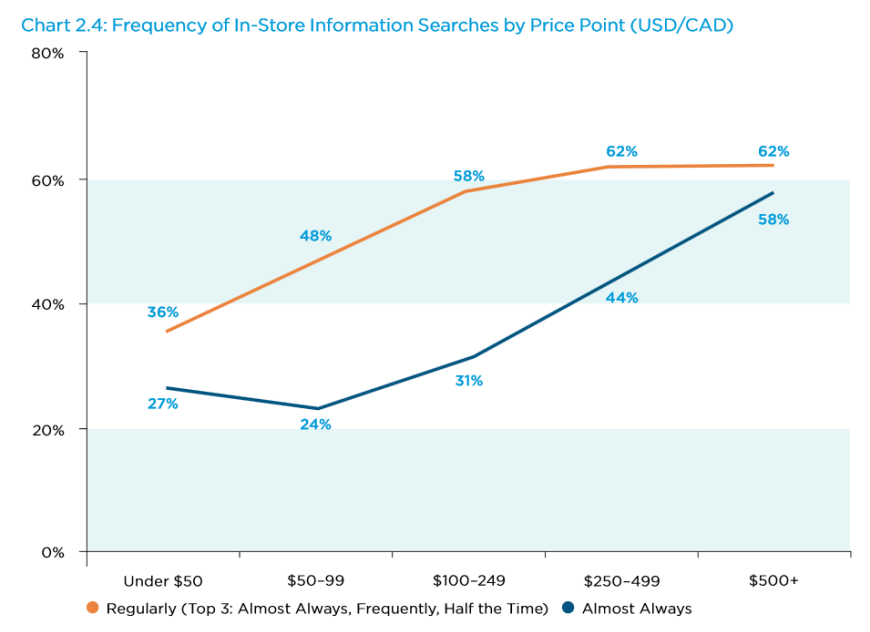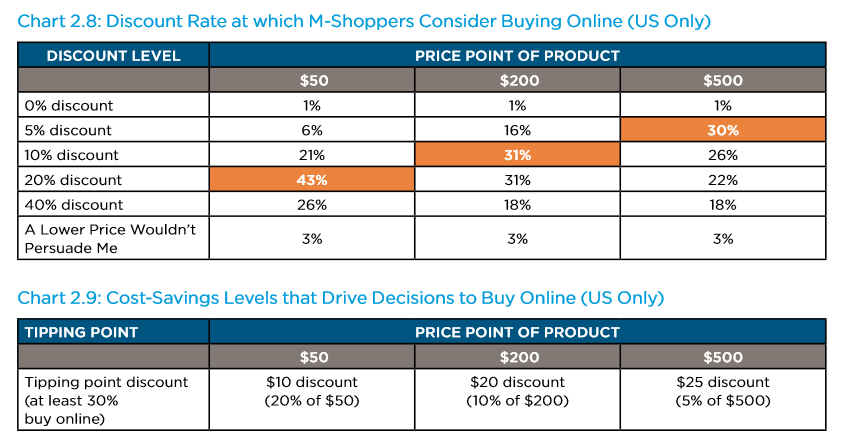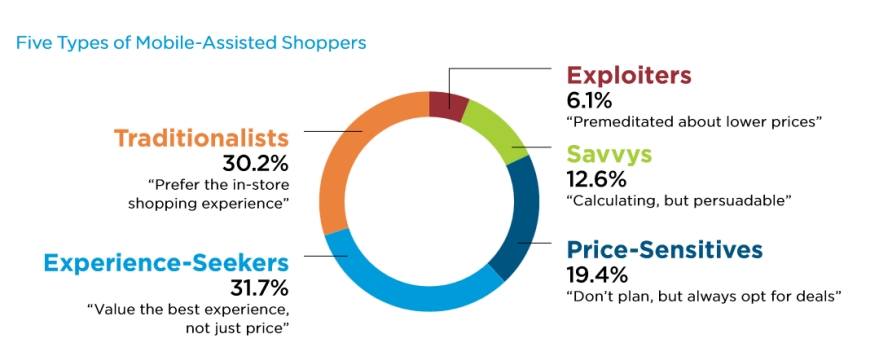Whether you’re brand new to ecommerce or you’ve been operating for a while, you should be aware of some of the most important best practices for ecommerce businesses. Leading ecommerce stores look for any edge to help them get more noticed and make more sales. http://ecommerceassociation.co/best-practices-for-ecommerce-businesses/ #ecommerce #bestpractice
Category Archives: ecommerce
How to Sell Online
Are you ready to start selling online?
If you’re unsure what to do, we can help, with our newest online training course, designed for those new to selling online.
How To Sell Online
This is a seven-part online training course providing a comprehensive introduction to Online Selling, from the basics to detailed instructions on how to build and run a programme.
This eCourse is conducted on a web-based e-learning software platform, enabling course participants to proceed at their own pace, accessing materials online. This particular eCourse provides content in a variety of multimedia forms, including videos, slideshows and PDF files. No special software is required to participate.
Course content will be provided in seven lessons, for participants to access in accordance with their own timetables.
Course Content
The course covers the following topics:
Lesson One: Know Your Customer
To whom are you selling? Is your market local, regional, all of New Zealand, Asia-Pacific, the English-speaking world or everywhere? In the current environment, are your designated markets easily able to click and collect or to receive deliveries?
Is your potential buyer female? Male? Young or old? Urban or rural? Niche or mass-market?
In recessionary times like these, consumers change their behaviour. They are typically much slower to spend, do much more homework and require a lot more reinforcement and validation before dipping into their wallet. In this lesson, we explore what you should know about today’s customers, what they need to know about your products and how you can communicate with them effectively.
This lesson also covers:
- The 10 most important factors that consumers look for when deciding whether or not to buy from you (and how you can improve each aspect)
- The seven aspects of online shopping that shoppers most want to see improved
- The five most likely reasons why consumers abandon their shopping cart in the middle of a purchase
Lesson Two: Which Products?
Some products are easier to sell online than others. We go through the attributes of products that have proven the easiest to sell through e-commerce.
If you don’t produce your own products, are there any issues with having the rights to sell particular products online (i.e. are there any territory restrictions that you need to observe)?
We also cover:
- The five most attractive offers that you can make, to close a sale
- The six factors that consumers are most likely to consider when comparison shopping
- The most popular items that Kiwis are buying online these days
- The four most-important offerings you can provide that will have consumers recommending you to their friends
Lesson Three: Where to Sell
Do you actually need a website to sell online? Not necessarily. We review some of the options available to you to list your products on various online marketplaces such as Trade Me, The Market, Google Shopping and Amazon.
Then we examine the basics of setting up a website. What are your options for getting a website set up on a shoestring budget? We look at such possibilities as Wix and WordPress and give a quick introduction to what is required. We tell you how and where to get your own website name and consider the most cost-effective alternatives for hosting your website.
Lesson Four: Choose Your Ecommerce Software
If you are new to selling online, there are a number of decisions that you will need to make when setting up an online store. Amongst those:
- what software should be used to operate your store (we explore the most popular options available to New Zealand sellers)?
- what payment options are available ? We explore the possibilities available to New Zealand businesses when it comes to accepting online payments, either by direct debit or by credit card (without you needing to have a merchant account).
Lesson Five: Plan Your Logistics
So now you’re selling successfully online — but you’re also drowning in paperwork, struggling to get goods out the door and in danger of being overwhelmed by your own success.
As many online sellers have found to their surprise (and frustration), it takes a surprising amount of time and effort to process, package and dispatch products if you aren’t already set up to handle such things in reasonable volumes. And that’s even without the coronavirus getting in the way. We discuss the essentials, including “click and collect” and various freight options.
We look at currently available tools and best practices (including listing, multi-channel management and logistics systems) and talk you through what you need to do to cope. In this lesson we also explore the steps you must take to build your reputation and credibility online — and how to protect that reputation at all costs.
Lesson Five takes you through:
- The ten questions that will kill your business if you don’t know the right answers
- Effective economies of scale and how they can be applied to your business
- The one common failing that will absolutely doom virtually any online sale
- Logistics solutions — where to find them and what to evaluate
- The importance of tracking for smooth after-sales service
Lesson Six: Effective Online Selling Secrets
In this lesson, we discuss how you can make ecommerce work for you. We talk about the 71 secrets of effective product pages and the 20 classic ecommerce mistakes you should avoid; and how to remarket to visitors who have left your site without buying.
Lesson Six also shares:
- The very best moment to ask your customer to spend a little (or a lot) more
- Upselling and cross-selling strategies that work best online
- Data, data, data — and why that replaces ‘location’ as the online retailing mantra
- How an oddly-named technology pioneered by Pattie Maes at MIT now powers the world’s most effective online selling machine (and how you can and must use it yourself)
- The three crucial ingredients of online retailing success — and how you can constantly refine them to improve your profitability in any market
- The secrets of today’s online retailing sales funnel
- Lessons you can learn from a long-dead professor
Lesson Seven: Getting Found Online
It’s very easy to be overwhelmed by Search Engine Optimisation and all the scientific mumbo jumbo surrounding search engines. We cut through the orchestrated litany of linkjuice jargon and explain the core principles you need to know to get your business found on Google and Bing search engines.
Once you have your web presence established, how do you attract traffic? We look at Pay Per Click advertising on Google and Facebook and their associated networks, take a look at the Video On Demand possibilities and consider online Display Advertising. It’s possible to waste a lot of money online; in Lesson Six, our aim is to save you from all that.
Course Creation & Tutoring
The course has been created by Michael Carney, longtime marketer and author of several books, including the top-selling book “Trade Me Success Secrets” (now in its Second Edition) which documents how to sell effectively on this country’s largest and most successful eCommerce platform. Michael is also the creator of a number of other online courses (including several Social Media Marketing courses) and consults on many digital business initiatives.
Who Should Take The Course
Any business aiming to sell products online.
————————
This course begins on Thursday No upcoming date found in provided date list.
INVESTMENT
This seven-part eCourse is available for $497+GST. However we offer a $100 Early Bird Discount for bookings received and payment made by midnight on Thursday No upcoming date found in provided date list. Pay only $397+GST for this course!
Bookings are confirmed on receipt of payment, which can be by cheque, bank deposit or credit card. We can raise an invoice in advance if you need it.
To reserve your place in this course, please pay by credit card through PayPal by clicking here.
If you would prefer to pay by bank deposit, or require an invoice before making payment, please send an email to info@ecommerce.org.nz with details of your request.
(The service provider will be shown as Netmarketing Courses in your transaction and on your credit card statement).
WHAT HAPPENS NEXT?
Your booking will be confirmed by email (if you have not received a confirmation within 24 hours, feel free to email info@ecommerce.org.nz).
On the first day of the course you will be supplied by email with login details and Course Notes for Lesson One.
ABOUT THE COURSE
This is an online course, conducted on a web-based e-learning software platform, enabling course participants to proceed at their own pace, accessing materials online. This particular eCourse provides content in a variety of multimedia forms, including videos, slideshows and PDF files. No special software is required to participate.
Course lessons will be provided in seven parts, for participants to access in accordance with their own timetables.
CUSTOMER FEEDBACK
Here’s what some of our students have said about our other courses:
- Really informative course, definitely helping us whilst we start out on our first ecomm project in NZ — Rob. T
- Thanks for another great course. I found it insightful, in-depth and I know our web presence and web sales will improve because of it. — Bruce H.
- I have somehow managed to develop over 80 pages of my own notes to complement the course ones. I look forward to participating in another in the near future. — Mark J
Nearly Half of Kiwis Now Shop Online
Earlier this month, Roy Morgan Research released some of the online shopping data from its Single Source New Zealand, July 2014 – June 2015 research study.
According to that research, just under half (49.3%) of New Zealanders 14+ (1.8 million of us) bought at least one product over the internet in the previous four weeks.
9.0% of Kiwis now buy travel products such as tickets or accommodation online in an average four-week period, making it the most common internet purchase ahead of women’s clothing (7.9%), tickets to shows, movies or events (6.1%) and fast food/delivered meals (6.1%).
Other popular online purchases include Books (5.0%) and eBooks (4.1%), music downloads (4.7%), and men’s clothing (4.0%)—with around half the number of online buyers as womenswear.
Top 20 products Kiwis buy online
John La Rosa, General Manager Client Services – ANZ Roy Morgan Research, commented at the time:
“It’s clear that many of the most common online sales are for non-physical items like tickets, bookings, home delivery, and downloads—that is, products with no shipping or that don’t need to be tried on or tested in a bricks-and-mortar store. For many, the internet is now the default channel for buying a travel or movie ticket, booking a hotel room, or ordering a pizza.
“Other commonly purchased items such as clothes, books and cosmetics are items that we know are identical whether bought online or in a store, so it may come down to price and convenience.
“But other products ranging from small electrical goods, sports equipment and homewares to computers, jewellery and hardware, are also gaining in the online space. It’s important that traditional retailers stop viewing online as a threat, and instead as an opportunity to reach and appeal to customers in different ways. Today’s consumers aren’t thinking in terms of online or offline—to them, it’s all just shopping. Retailers therefore need an ‘omni-channel’ view of their offerings, competition, pricing, service and advertising.
“Around two-thirds of internet shoppers agree they only buy from online retailers they know—whether that’s trustworthy online-only outlets or the websites of bricks-and-mortar shops. Around 1 in 5 say they only buy from New Zealand online stores.
“Also, the internet isn’t just a sales channel; it’s often the way we do a bit of pre-purchase planning via computer, mobile or tablet instead of visiting stores. Almost half of Kiwis agree they research products or services online before buying in-store, and almost 1 in 3 did product research online within the last four weeks.”
The study is based on a sample of 5983 New Zealanders 14+ and was conducted over the 12 months to June 2015.
How To Sell Online: 10 Easy Steps For Beginners
So you want start selling online? That’s great! But where do you start, especially if you’re new to the whole business of selling online?
Here’s what we recommend:
1. Identify your potential customers
Every sale starts with a customer. If you think you’re going to sell to “everyone”, you’re sadly mistaken. Only an excruciatingly small proportion of the global population will want to buy what it is you have to sell.
So let’s get real. We won’t get fancy, at least not yet.
When you’re ready to get fancy, we’ll direct you to Tony Zambito and his definition of what he calls Buyer Personas, “research-based archetypal (modeled) representations of who buyers are, what they are trying to accomplish, what goals drive their behaviour, how they think, how they buy, and why they make buying decisions.”
For now, we’ll settle for a rudimentary customer definition that includes:
- Gender (Male, Female)
- Age Group (Children Under 8, 9-13, 14-17, 18-24, 25-34, 35-44, 45-54, 55-64, 65 Plus)
- Employment Status (student, full-time employment, part-time employment, unwaged, domestic duties, retired)
- Marital Status (single, in a relationship, married, divorced, widow/widower)
- Location (just your city, all of New Zealand, Australasia, Oceania, Southern Hemisphere, English-speaking countries, global)
- Interests (sporting, hobbies, arts & cultural)
- Media Habits (consume traditional media, predominantly online, heavy social media users, mostly mobile)
No, you won’t know all that information right away — but if you have existing customers, you can survey them. Otherwise, survey your new customers as you acquire them.
Why do you need to know this information?
Because it influences:
- What you sell to them (their needs/wants will vary based on their circumstances)
- What they can afford to pay
- How you sell to them (younger audiences prefer short copy, lots of pictures, ideally video)
- Where you sell to them (no point advertising on Facebook if they’re not there)
- When you sell to them (if they’re working, they won’t be buying much during work hours)
2. Choose what you’re going to sell
You may already have a product you’ve developed and plan to sell. In that case, skip to the next step. On the other hand, if you’re planning to sell someone else’s product(s), keep reading.
You may already think you know what sort of products you’d like to sell. But that may change once you’ve defined your customer more precisely (as noted above).
Alternatively, you may have decided on the types of products you want to sell, you just need to find out where to source them. In that case, may we recommend that you take a look at the Worldwide Brands Directory (www.worldwidebrandsdirectory.com). It’s a certified database of thousands of the best dropshippers and light bulk wholesale suppliers, who carry millions of drop-ship and wholesale products you can sell on the Internet. Worldwide Brands has been certifying these suppliers since 1999, and has built up an enviable reputation for its directory (you’ll find a review here: www.worldwidebrands-review.com).
3. Get your own web address
Yes, you could just have your own free web address on someone else’s site (yourbrand.freehost.com), but why would you (apart from the free part, of course)? That would be like setting up a shop inside a supermarket — everytime anyone asks you for your address, you end up promoting your landlord, not yourself.
If you think you’re only going to be selling to the New Zealand market, purchase a .CO.NZ web address (eg www.yourname.co.nz). There are plenty of domain name resellers, but we recommend www.discountdomains.co.nz — NZ .CO.NZ domains purchased there start at NZ$27.95 +GST per year.
On the other hand, if you think you’re likely to be selling internationally, sooner or later, look for a dotcom address — we recommend www.godaddy.com (but just for the address, not the hosting). Godaddy dotcom addresses typically start at around US$10.99 a year for the first year.
4. Get a website
Once you’ve registered your web address, sign up for a hosting account with global hosting provider Hostgator (http://bit.ly/explorehostgator). We host all our websites there, hosting is from US$3.96 per month (for unlimited storage and unlimited traffic), and their support is generally excellent.
During the signup process you specify your existing domain name and Hostgator will tell you how to transfer it to them.
Once you’re up and running you’ll have access to your website backend through an industry-standard service called CPanel. There are plenty of articles and video tutorials online about CPanel (just google “how to use cpanel”).
Using CPanel, set up some email accounts (eg info@yourdomain.com, support@yourdomain.com, etc). If you use Microsoft Outlook, you can set up separate accounts on your computer to clear each email account.
5.Install WordPress
Using CPanel’s “QuickInstall” facility, install WordPress (listed under “Blog Software”) – the software will be installed automatically on your website.
6. Add WordPress plugins
Once you’ve set up WordPress, your site will be ready for you to start adding content right away. However, for optimum effectiveness, you should add in a number of key plugins which add enhanced functionality. You can either google “best WordPress plugins” or use a service like WPFreshStart (http://wpfreshstart.com/ — currently costing around US$27), which quickly adds important plugins to make it easier for your site to be found through Google.
7. Set up a business account with www.PayPal.com, to handle payments by credit card
PayPal has no set-up costs, just a per transaction percentage (currently 3.4% + $0.45 NZD per transaction).
8. Add your estore
You’ll still need to add ecommerce functionality. Start with Shopify (http://bit.ly/exploreshopify). After a 14-day free trial, you’ll pay from (Starter plan) US$14 per month.
9. Market your estore
Once you’re set up, you’ll want to market your products online. Check out our Social Media Marketing courses to help you do that.
10. Learn much more about eCommerce
We would be remiss if we didn’t point you in the direction of our “Mastering eCommerce” course: www.ecommerce.org.nz/ecourses
Kiwi Online Shopping & The Global Threat
As we plunge into 2015, shopping online will continue to outpace traditional retail growth — NZ annual online spending is now equivalent to around 9.5% of traditional retail sales (excluding grocery and liquor).
Good news for online traders, right? Yes, but there’s an elephant in the ether, in the form of international eCommerce.
Take a look at the latest stats, from BNZ/Marketview (October 2014):
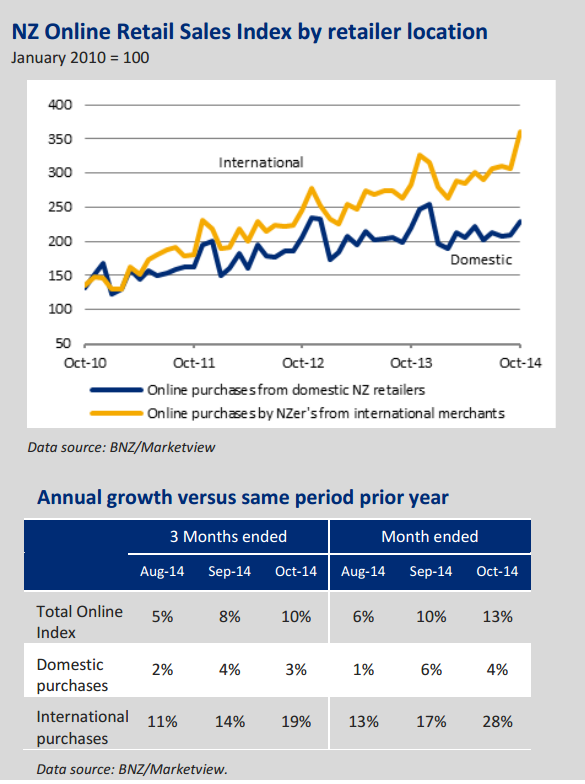
As the charts above clearly indicate, more and more Kiwis are choosing to shop online at international merchants, and it’s a trend that seems to be accelerating.
Domestic online sales are still in the majority, but that’s unlikely to remain the case for much longer. As the graph below shows, international purchases now account for 43% of online sales.
If the current international growth rates continue, we can expect international online purchases to be greater than domestic online within two years.
So where’s the money going? BNZ/Marketview helpfully provides a breakdown by industry sector:
Of even greater interest: how spending patterns have changed over the last 12 months. Most notable: the dramatic decline in expenditure on daily deals, as consumers grow weary of being bombarded with constant email exhortations to save money by spending.

Another trend which has become evident in 2014 and which will simply swell in importance in 2015: shopping by smartphone. A pre-Christmas survey commissioned by new Kiwi shopping site and app SellShed found that one in three Kiwis (35%) were planning to use their smartphone to find presents for friends and family, avoiding Christmas queues in favour of convenience.
Other eCommerce trends of note, from a bevvy of industry experts (as reported by Ometria):
- Pia Stanchina – Industry Manager, Fashion at Google: “We forecast that 50% of UK retail-related queries will come from smartphones this Christmas, which is testament to the transition from the desktop era to the mobile era.”
- Drew Sanocki – Ecommerce consultant, drewsanocki.com: “I think the biggest thing is segmentation and targeting. I’m consistently surprised at the number (and size) of retailers that I work with that aren’t implementing even a basic level of segmentation and target to 1) identify their best customers and 2) treat them well.”
- Alicia Navarro – CEO, Skimlinks: “I’m excited about Apple Pay and the future of payments on mobile devices. The easier it will be to transact on mobile (and to track sales accurately) the more the advertising and affiliate markets will expand, which benefits publishers, advertisers and ultimately users.”
- Ashleigh Tennent – Marketing and Customer Experience Director, Wool and the Gang: “Opportunity lies in storytelling, not by the brand, but by its community. Smart brands will get their customers to create incredible content – that’s far more believable and real. Over time you’ll find that the content that converts at the highest rate will be created from within your own community.”
- Michel Koch – Ecommerce Director UK and International, Maplin Electronics: “Here are the three top opportunities for ecommerce marketers, in order of importance:
– embracing multi-touchpoint analytics and attribution modeling to improve campaign efficiency, by identifying the best performing journeys across channels and devices and the right timing to push the right message to the right customer.
– leveraging mobile in a multichannel environment, providing customers with timely information and services wherever they are (home, stores, on the go).
– leveraging the power of video (product and how to videos) and user generated content (photo and video curations) to differentiate the brand and increase visibility across channels and devices as well as improve conversion.”
If eCommerce is going to be important to you in 2015, we really have no choice except to recommend that you check out our Mastering eCommerce course (especially because you can enjoy a $200 discount if you sign up by December 21).
Australian Online Retail Industry Awards Finalists
If you’re looking for inspiration in eCommerce, industry awards can be a great place to start. Finalists for such awards usually include both best-practice operators and innovative eCommerce entrepreneurs, so they’re a better resource to explore than merely looking at the eventual winners.
With that in mind, take a look at the just-announced finalists for Australia’s Online Retail Industry Awards (as reported by PowerRetail):
The finalists for the 2014 StarTrack ORIAs are:
Best Pureplay Online Retailer
Best Multichannel Retailer
- Dan Murphy’s
- David Jones
- Harvey Norman
- Masters Home Improvement
- Michael Hill International
- Shoes of Prey
- Woolworths Online
Best New Online Retailer
Best Social Commerce Initiative
Most Innovative Online Retailer
Best Online Retail Marketing Initiative
Best Customer Experience
Best Aggregation Channel
Best Site Optimisation and Design
Best Mobile Commerce Site/Application
Industry Recognition Award
- Carl Hartmann, CEO, Temando
- Graham Jackson, Managing Director, hybris Australia
- John Winning, CEO, Winning Group
- Marie Mortimer, Managing Director, loans.com.au
- Ross McDonald, Industry Head for Retail, Media and Classifieds, Google
- Todd Alexander, Director of Customer Programs, eBay
- Tony Nash, CEO, Booktopia
7 Lessons That Kiwi Small Businesses Can Teach Us About eCommerce
We can always learn more about eCommerce, especially from those who are hard at work in the trenches.
For the last week or so, Caitlin Sykes has been running a series on eCommerce and Small Business over at the NZ Herald website. Here are some of the key lessons from that series:
1. Stay on top of evolving technology
Rennie Resources started in 1999, offering economics workbooks, resources and online learning to NZ schools and teachers. When the business began, all sales were made via post and fax; today 90% of orders are done online, with very few via post.
The company’s online presence has been regularly updated:
“We have recently built the fourth version of the e-learning website incorporating what we have learnt from listening to feedback from students and teachers. More schools now have computers and bring-your-own-device policies, so we are seeing a shift towards schools and teachers using our online resource.”
Dan Rennie, founder of Rennie Resources and Elearn Resources
Robert Ewan of t-shirt and lifestyle brand Mr Vintage adds:
“The biggest change we’ve seen [recently] has been the increase in conversion rate on mobile devices, so stripping back our mobile site and making it easy to navigate on a mobile has really helped.”
2. A blend of online and offline sales can be very effective
Holistic Hair is a natural hair care company primarily focused on finding natural alternatives to help alleviate specific hair and scalp disorders. The company sells online and through health food stores, pharmacies and hair salons.
Nigel Russell, founder of Holistic Hair, explains how the company manages relationships with retail outlets while also selling products direct to consumers:
“The online business is primarily based on a consultation model, allowing me to advise and recommend products directly with the customer and we always give them the option of buying it nearby by providing a detailed list of our stockists.
“What we have found is customers may buy online the first time, almost as a trial, then locate a retailer nearby and continue buying from them.”
Turet Knuefermann of fashion brand TK made a similar point:
“Having physical stores as well as the online presence gives consumers the confidence they are able to talk with someone with regards to their products.
“We’ve found customers are searching online for products and that then draws them to come and try garments on in store. Many of the online TK shoppers are existing customers who already know and trust our product who have moved out of town or overseas, or their friends who have been recommended our brand by them.”
3. Rapid Response can provide huge opportunities for eCommerce operators
Whatever industry you serve, eCommerce can allow you to take instant advantage of topical events. That’s particularly true in categories such as t-shirts, as Robert Ewan of Mr Vintage, explains:
“Being quick to market with products has really worked well for us in the past, especially with topical and sports-themed t-shirts. We do all our design and printing in-house so we can have new products live on the online store in a matter of hours. Back in the early days of the business this was great for building the brand, as we could release a t-shirt about a topical event then, because the product was released so quickly, the t-shirt itself became part of the story in the media.”
4. Excellent Customer Service is essential
Striving for service excellence is not just a nice-to-have, it’s a vital component of doing business online. As Turet Knuefermann of TK notes:
“Being prepared with the right systems and freight forwarders is key for fast and reliable delivery. We want consumers to have the same trust in our online products and service as they do in our stores. I think ensuring as much information is given at point of sale as possible is also important to reduce returns, and queries should be answered quickly and personally.”
5. Start small
The ready availability of low-cost, subscription-based eCommerce software means that you needn’t invest vast sums of money to get started. Take a few small steps and see if eCommerce can work for you.
Tanya Carlson, founder of women’s fashion brand Carlson, talks about her experience:
“Because this was our first foray into ecommerce, we were initially quite reluctant to throw a whole lot of money at this untested market, so we chose Smallfish as our platform. For a small, monthly fee we were able to build our own store, which we can update and edit as much as we like, and the platform is so user friendly no coding or website-building experience is required.
“Our multi-site manager took this project on and is still in charge of the day-to-day maintenance and editing of the site. There are some limitations to the colour scheme and layout of the store with this kind of platform, but it has been a great way for us to venture into ecommerce without a large financial commitment, which is ideal for us as a small business.”
6. Social Media can provide low-cost, high-impact marketing
Social Media has been surprisingly effective for these Kiwi eCommerce businesses, especially in the fashion sector Tanya Carlson talks about what works in terms of growing online sales:
“Tying everything back to our social media. New products are always posted on Facebook as soon as they are uploaded to the online store and we keep our VIP customers informed of new arrivals and promotions via email as well. We notice that every time we send out a VIP email both the online and in-store sales of the styles mentioned spike for the next few days. It’s great to be able to see our communication with our customers have a positive impact on sales so instantly.”
It’s a tactic echoed by Turet Knuefermann:
“Our Facebook presence, which we set up in 2011, has been the biggest support to our online store and has given us the highest measurable return. What’s more it’s free and takes seconds to update. I think it’s also less intrusive than the kind of email mailouts that flood people’s inboxes daily, as people choose to look at your feeds, and they’re quick to share with friends. It’s also easy to link images to the website and people don’t expect a high quality image – they just want the latest update on what’s new and to be inspired. The more you can do to make your product visible, the more people will be inclined to purchase and share their excitement with friends and family, which in turn creates more demand.”
[If you’re interested in social media marketing, please check out our online training courses at our sister site, SocialMedia.org.nz]
7. You don’t necessarily need Big Data – but you do need the right data
One area where eCommerce strongly differentiates itself from its offline counterpart is in the availability of information. You need to avoid drowning in data but you should always track relevant metrics.
Andy Abel of Need A Part, a Wellington-based online retailer specialising in small appliance parts, talks about the importance of relevant information gathering and analysis:
“It’s impossible to give users a good experience if you don’t know how they’re using your site so we do a lot of custom reporting on Google Analytics to track how customers interact with our site. This information has led to us changing sizes and colours of buttons, slimming down the checkout process, and putting certain information in more obvious places.
“We’ve also started crowdsourcing a lot of information. We now hold more than 500 different parts in stock, but there are thousands more that aren’t worth holding in regular stock. Every single time a customer enquires about a part that we don’t stock, our suppliers provide us with up-to-date information, such as the current price and whether or not it is currently available. That information is then available on the website to anyone else who is looking for it.
“In the last year we’ve also started integrating with online tools from New Zealand Post. They are really ahead of the curve in terms of free online services to help online businesses. We use their address finder to help people move through the checkout faster, and we’ve recently started using their ‘tracking notification’ system. Every time a parcel is scanned, our website is pinged, meaning we can contact the customer. When a delivery scan is recorded, we email the customer to let them know. It’s amazing, as it means that customers can get in touch straight away if the parcel hasn’t turned up. It saves them waiting three days, getting angry and then calling us.”
If you’d like to know more about eCommerce, check out our online training course on the topic.
Online Shopping Continues To Grow, But …
The latest BNZ Online Retail Sales Index (covering the 12 months till the end of February 2014), shows continued growth in online shopping – but with Kiwis continuing to buy more and more from international stores.
Specifically:
- 42% of NZ online retail purchases in February were from international merchants
- Online purchases at offshore merchants were 21% higher than in February 2013
- Online purchases at domestic sites were just 6% higher than in February 2013
Here’s how the sector has been trending over the last five years: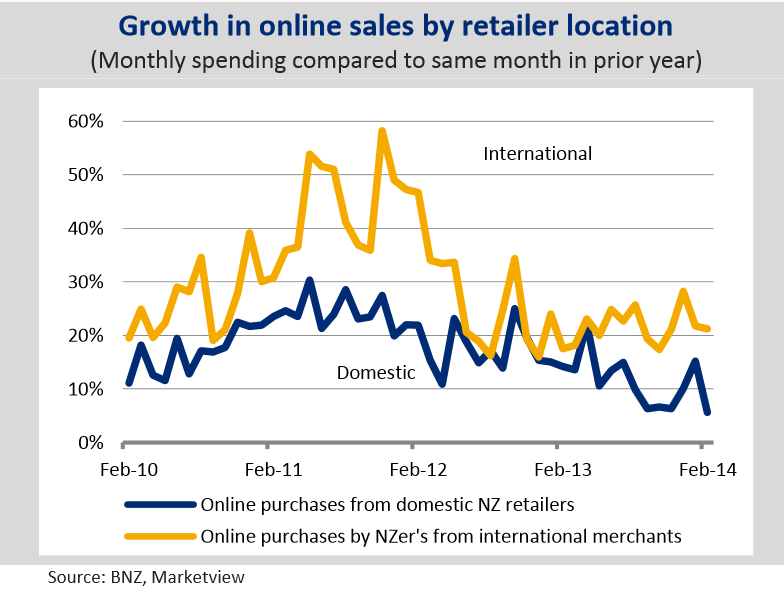
The BNZ report also drills down into exactly which product categories are being purchased from international sites:
No great surprise to see that Furniture is predominantly purchased from Kiwi suppliers: international freight costs for large items remain a significant barrier.
The BNZ reports that:
At domestic merchants, online sales in February were up strongly for Supermarket & Groceries, Other Specialised Food, Department Stores, and Pharmaceuticals & Cosmetics.
[However] domestic online sales of Clothing, Liquor, Electrical Appliances, and sales at specialist Daily Sales sites, were all softer than in February last year.
Why are domestic online retail sales lagging behind?
Yes, relative product costs can be a significant factor — internationally-sourced items offered locally can include margins for the importer, distributer and the retailer, resulting in substantial premiums for “buying locally”. However, as recent research by Sapere (“The value of internet services to New Zealand businesses“, March 2014) suggests, another key factor is local retailers’ reluctance to embrace online sales:
In retail, all our respondents with an online store said it was their fastest growing channel, but (apart from the online-only operators) online was still a small minority of sales. One major chain thought that, despite extensive effort and very large investments, they were still only 1-2% of the way towards the frontier of what was possible.
One service provider suggested that no more than 1 in 12 of New Zealand retailers were really doing a good job of integrating online and offline stores. “The others are just online by default or because they think they have to be, but it is costing them a lot, and it brings new hassles, they have to do it all themselves, and they are not sure whether it will work at all”
Sapere continues:
Retailers are experimenting online but there is still much to do. Internet services are seen as important and effective for marketing and, for a small but growing number of firms, for sales. The competitive impacts of total price transparency enabled by online shopping and competition from online and overseas retailers are evident for retailers operating in some categories. We estimate that a retailer making more extensive use of Internet services is 7% more productive than the average retailer.
The Sapere report included a number of interviews with NZ retailers, sharing their perspective on online retail:
One interviewee said that she foresaw a gloomy future for retailers selling goods exposed to overseas online competition who did not have a strong brand or a point of difference. Bearing this out perhaps, we spoke to a jewellery retailer with a strong point of difference who saw no threat from the Internet. For that business the website and social media were channels for branding and advertising, and a useful addition to the print plus word of mouth model that had prevailed for a long time as the way to get work.
It was not clear in general in what circumstances online retail would add to total sales, whether it would just take share from another competitor or from the offline store, or whether it was additive to sales overall. Some interviewees said that they were just pursuing every angle that they could that might generate more business, and expanding on the things that seemed to work. One interviewee took the view that online sales were not additive at all at the sectoral level, i.e., it was just boosting competition and shifting sales between competitors.
One larger clothing retailer told us that an integrated online/offline/telesales strategy was working, but that it had taken a long time to figure out how to get the different elements to work together rather than competing with each other. This interviewee also said that having an offline store in an area helps to boost online sales in that area: perhaps customers are more confident to shop online if they know that there is an offline store as well.
Another large chain told us that its online store had a clear, material and positive impact on total sales, that customers spent more online than in store, and that this was because the online environment could better meet customer needs, rather than just diverting business from competitors.
One retail service provider was cautiously optimistic about the overall impact of the Internet on retail. “Online is certainly taking away instore sales to some extent, but it is also an opportunity to capture customers who are browsing online. Comparison shopping is now so easy, consumers are price conscious and better informed, but they are willing to purchase online or come in store if they find what they want and they know that you have it.”
Succeeding in Online Retail
All this research leads us to conclude that if the only thing that differentiates you from other retailers selling the same products is your geographic location (eg yours is the only shop in Gore selling these products), you’re going to fail at online retail.
Conversely (and we first made this point in 2005, in our book “Trade Me Success Secrets“), your best opportunity lies in offering unique, personalised items with a high perceived value, so that you’re effectively providing both uniqueness and a great deal.
What was true for Trade Me in 2005 (competing with thousands of other Kiwi sellers) is even more relevant in 2014, when you’re competing with millions of other sellers from around the world.
Location matters — but only if:
- you know what your local/regional/national customers really want, and give it to them through your customised products and services
- your delivery times are quicker as a result of being close to your customer
- your delivery costs are also lower as a result (did you know that free shipping is more attractive than a discount in most cases?)
If you’d like to know more about online retail for New Zealand businesses, check out our Mastering eCommerce course
Kiwis’ Offshore Shopping Continues To Grow
The latest BNZ Online Retail Sales Index (to 31 January 2014) shows that growth in online shopping continues to outpace traditional shopping — but the big growth is in Kiwis buying from international sites, up 24% year-on-year (while domestic online sales grew by 10%).
In our view, that international growth is driven by quite a number of factors, including:
- greater Kiwi comfort with shopping from international sites (from big brand sites, at least)
- the increasing spread of debit cards, which provide more and more Kiwis with the ability to use their bank accounts for shopping online
- word of mouth from satisfied Kiwi international shoppers, encouraging their friends to do likewise
- the introduction of US and UK mailing addresses by New Zealand Post, publicising and legitimising the practice of mail collection and forwarding
- more and more international websites offering pricing in NZ dollars and some (eg UK Book Depository) offering free shipping to New Zealand
BNZ have put their latest stats into a handy infographic:
The Perils Of Showrooming – And What Retailers Can Do
With the continuing spread of smartphones (by May 2013, according to TNS Mobile Life, 60% of Kiwis had smartphones), local retailers need to develop strategies to deal with the practice known as “showrooming”.
What is showrooming? According to Wikipedia, “showrooming is the practice of examining merchandise in a traditional brick and mortar retail store without purchasing it, but then shopping online to find a lower price for the same item.”
Why do consumers showroom?
A September 2013 Canadian/U.S. study, “Showrooming and the Rise of the Mobile-Assisted Shopper“, identified the key reasons cited by consumers:
Conversely, why do Mobile Shoppers still buy instore?
The value of the item under consideration matters, according to the study, with more expensive items (unsurprisingly) more likely to be showroomed:
And the critical pricepoints?
Is showrooming a problem in New Zealand?
Yes, according to Colmar Brunton (CBOmnijet Sept 2013), who report that 58% of online Kiwis have seen something in a shop, checked the price on their phone while in the shop and then bought the item elsewhere.
A BBC news report highlighted the demise of a camera retailer, and staff reaction to the store’s closure:
“The staff at Jessops would like to thank you for shopping with Amazon” read the sign in a shop window shortly after the British camera chain went into administration.
It was a dry reaction to a growing problem for “bricks and mortar”-focused retailers. Showrooming is said to have exacerbated the decline of high-profile brands like Comet.
Gadget stores, bookshops and the cosmetics industry are all losing sales to showroomers, but solutions have proved hard to find.
Kelly Buckle, 23, of Birmingham, sometimes spends more than £200 in a single shopping trip – but never actually gets as far as the checkout.
“I can go in and smell a perfume and then find it online for £30 less,” she says.
Research by design agency Foolproof found that 24% of people showroomed while Christmas shopping – and 40% of them took their business elsewhere.
So what (if anything) can be done about showrooming?
One strategy we wouldn’t advise is to follow the example of this Queensland store and charge prospective customers just for browsing:
A Brisbane specialty grocery store owner is charging customers to browse after becoming fed up with people who enquire but don’t buy.
A poster telling customers they’ll be charged $5 for browsing if they don’t purchase anything has been put up at Celiac Supplies in the suburb of Coorparoo.
Owner of the gluten free produce store, Georgina, says she resorted to putting up the sign after spending hours each week giving advice to people who leave empty-handed.
About 60 people a week would go into the store, ask questions and then buy the same or similar product at a supermarket chain or online.
She has became frustrated as her prices often match that of the supermarkets but people still go elsewhere as they are under the impression it will be cheaper.
She says the sign has turned some people away but others are more sympathetic and pay up.
“I can tell straight away who are the rat bags who are going to come in here and pick my brain and disappear,” she said.
Australian Retailers Association executive director Russell Zimmerman says charging customers to browse will likely turn people away.
He says a few stores in Queensland are charging to try on shoes or clothing but this is the first time he’s heard of a browsing charge.
Better instead, perhaps, to consider this American example. Time Magazine reports that leading U.S. retailer Nordstrom is testing one possible way to benefit from the practice through a partnership with jewellery website Blue Nile:
Blue Nile is paying Nordstrom for display space in the chain’s downtown Seattle store. A Blue Nile representative is on hand, iPad at the ready, to answer questions and help create customized rings.
The practice is unique because Blue Nile is a direct competitor to Amazon, and customers who want one of the rings have to purchase from the jeweler’s website.
Why would Nordstrom want to be used so blatantly as a mere showroom for another retailer? For one thing, though the terms of the arrangement were not made public, Blue Nile most certainly is paying the department store for its prime retail space. The other reason for the partnership is that Nordstrom hopes it will attract new customers to check out its Wedding Suite area, where they’ll browse (and perhaps buy) wedding dresses, bridal gowns, and other items before or after checking out the jewellery from Blue Nile.
If that sort of partnership strategy is unlikely to work for you, here are some other possibilities. First, USA Today suggests these ten strategies:
1. Offer benefits. For those who purchase from you, offer post-purchase support — lessons, personal set-up, service, telephone support.
Make sure you prominently display the fact that such services are included after purchase for those who purchase from you.
2. Stock different merchandise. If a shopper can get exactly the same merchandise online at a lower price, it’s easy to comparison shop.
So look for items that are unique or special in some way.
3. Specialize. Become a desired destination for certain shoppers.
A small grocery store in my neighborhood, nondescript store where people pick up a few last-minute necessities, transformed a section into a specialty store, stocking craft beers with a sign outside touting “999 great beers — and a few lousy ones.”
4. Hold events. Become a place customers want to hang out.
I recently attended a great event at my local bookstore, Kepler’s Books in Menlo Park, Calif. One Saturday night, they had a book swap.
For a price, the bookseller offered food and wine and guests swapped books they loved with one another. It reminded me how wonderful it is to be surrounded by people who love books and reading and how fabulous it is to go to a vibrant, real bookstore.
5. Create a membership programme. Why not turn customers into members?
This isn’t as crazy as it sounds. After all, outdoor sports retailer R.E.I. has members. Members pay a small price but get a discount on purchases, invitations to special events, extra services, and a greater feeling of attachment to your store.
6. Engage with customers on social media. The closer customers feel to you, the more likely they are to be loyal.
7. Allow customers to run a tab. Everyone loves to be considered a regular.
If you sell something that customers purchase regularly — books, garden supplies, hardware — create a programme where they leave a credit card on file and just add to their tab when they come in.
8. Make sales from your website. Some customers may not be quite ready to buy when they come to your store but want to make an online purchase later.
If you don’t have e-commerce on your website, they’ll go elsewhere.
9. Provide great service. Small businesses have to go the extra mile to stay alive.
I go to my local hardware store instead of the big, ugly home-improvement stores because I get help from people who really know what they’re talking about. They’re friendly, helpful, knowledgeable, and I like going there.
10. Do everything you can to remind people what they lose when they fail to support local stores: the convenience of shopping locally, the health and vibrancy of their town, and, most important, tax dollars that support their schools, streets, and safety.
The US National Retail Federation gives some useful additional advice:
11. Seize the moment. Bricks-and-mortar retailers have a chance to salvage a sale that might not otherwise happen if the customer is merely shopping online.
12. Engage all five senses. Take advantage of the physical presence of the customer to wow them with sight, sound, touch, taste and smell.
13. Upskill your staff. In-store consumers have more information than ever before. If sales associates can’t enhance that knowledge — or worse, know less about a product than the customer — the sale can be lost.
But “if the sales associate is empowered with technology and has a deeper understanding of the product” and access to CRM data, “they’ll have a better opportunity to connect more effectively with the shopper,” says Branden Jenkins, general manager of e-tail/retail products for NetSuite.
Focusing on staff expertise will move the in-store experience from commodity-based to “value added”. People still buy fashion in a store to ask, ‘Does this look good on me?’ … [retailers] need to drive up knowledge as currency.
14. Know your customers. Customers also want to feel valued — and known — by the retailer.
The battle for the retail floor is going to happen in the cloud [via] customer data and an understanding for customer preference. Most companies — retailers and non-retailers alike — “do a poor job of leveraging the valuable customer information they have,” says Brent Cohler, director of mobile product marketing for SAP. “That’s frustrating because the more customers are engaging with the brand, the greater their loyalty and expectations. Retailers should provide customers with personalized content and offers at the point of decision. They can do this using information from a variety of sources … and combining it with the rich contextual signals that mobile devices provide.”
Greg Girard, program director of merchandise strategies for IDC Retail Insights, cites the MyLowe’s plan, in which Lowe’s customers swipe a card when they make a purchase and can keep up with home-oriented details online. Lowe’s “can help manage warranties of products … or remind them that it’s time to do periodic maintenance,” he says. “That’s a great customer support system, but there’s analytics behind it, too.”
15. Millennials are leading the way … but not for long
Mark Logan, senior vice president of digital innovation at advertising agency Barkley and head of Moonshot Innovation Lab, says half of all millennials surveyed in 2011 reported using smartphones while shopping, compared with 21 percent of non-millennials. “A year later, that gap had closed,” he said.
And retailers with older core audiences need to pay particular attention, says Jeff Fromm, Barkley’s executive vice president and author of Marketing to Millennials. “The older generation is adopting more and more the technology habits of the millennials,” he says. “Millennial influence is much greater than just the impact on members of their generation.”
Barkley’s research showed Facebook was the second most-used app among millennials while they shopped. “When we asked them about it, they told us they use it as a way to consult with friends about a potential purchase,” Logan says.
In fact, the research showed that 60 percent of millennials don’t make a decision without seeking advice from others. Retailers “could make it easier to gain ratings/reviews and see that the value equation is in line instead of trying to prevent it,” Fromm says.
Logan cites cosmetic retailer Sephora, which allows customers to scan a barcode for access to reviews and ratings. “It’s a simple tactic that gets people thinking about checking out the review,” he says. “It brings the tacit endorsement from all those voices into the … store.”
And for millennials — and those who follow — that might just be enough to close the sale.
Mobile-Assisted Shoppers, Segmented
Finally, let’s hear some good news. That September 2013 study we mentioned earlier, “Showrooming and the Rise of the Mobile-Assisted Shopper“, took a closer look at the category and established that not all shoppers are alike. The study identified five different segments:
These were the key findings of the study:
- Only 6% of Mobile-Shoppers are “Exploiters” — already planning to buy online, and always opting for the lowest price
- 30% are “Traditionalists” — committed to purchasing in-store, and only using their smartphones to find more information
- Convenience, urgency, and immediacy — the top three reasons that Mobile-Shoppers buy in-store even after they find the same product cheaper online
- 48% of Mobile-Shoppers are more likely to purchase products in-store despite equal or cheaper prices online when they are a loyalty program member
- 60% of Mobile-Shoppers are more likely to buy a product in the store when they find online reviews on their smartphone
- 55% are willing to sign up for a store loyalty programme in order to gain benefits on their smartphone while in the store
For more details about these Mobile Shopper segments, download the free report here.
Our conclusion: showrooming is a problem for retailers, but not an insoluble one.

